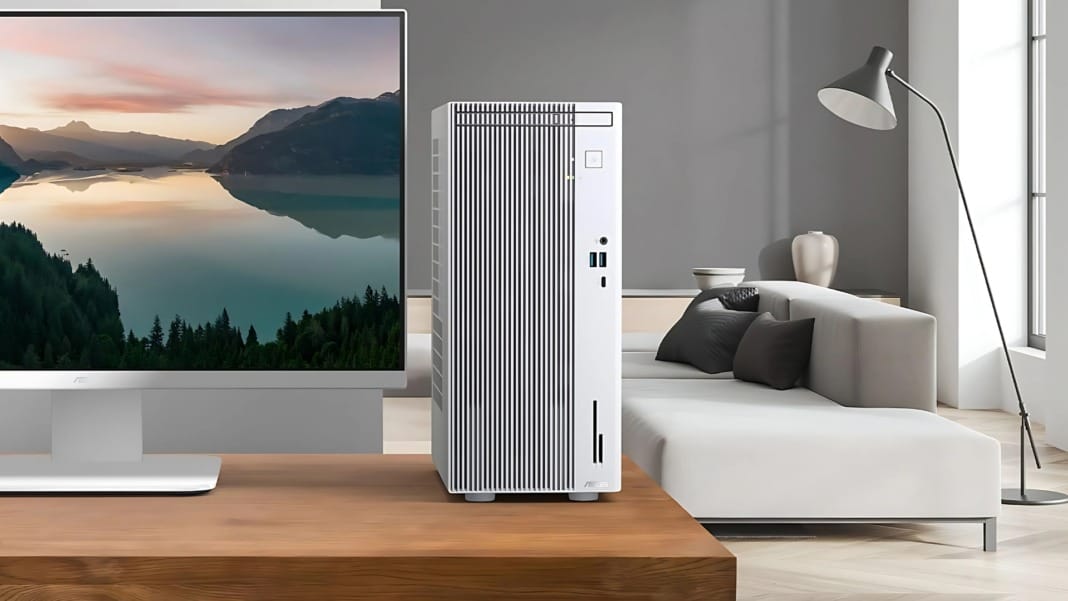The humble desktop tower has never truly disappeared, yet buyers now expect far more from a PC that sits under the desk. Small footprints, quiet fans and laptop-class efficiency are all in vogue, especially in homes where space and silence matter as much as raw speed. The V500 Mini Tower offers practical computing power in a space-efficient chassis that fits neatly beside or under a desk. While not as small as a Small Form Factor (SFF) system, it remains a manageable option for users with limited workspace.
Designed around Intel’s 13ᵗʰ-gen mobile processors and paired with DDR5 memory, the V500 aims to deliver reliable, everyday performance. It supports dual SSD and HDD storage configurations, along with a full suite of I/O options including USB-C, HDMI, DisplayPort and SD card slots. ASUS has also emphasised build quality and cooling, stating that the system is tested beyond industry standards for durability and is engineered to stay quiet even under load.
The model comes in two configurations in Singapore—one featuring the Intel Core i5-13420H, and the other powered by the higher-end Intel Core i7-13620H. Both variants are designed to suit users looking for smooth multitasking, general productivity, and light creative work. ASUS has also added AI features such as noise-cancelling technology to round out its remote work credentials.
Designed to be discreet but practical
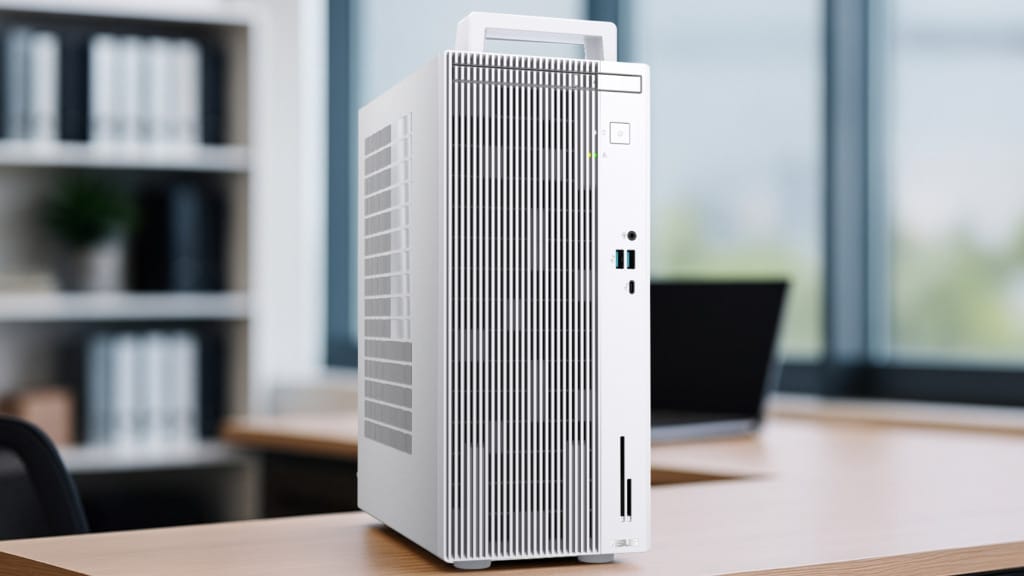
At first glance, the V500 Mini Tower resembles a scaled-down workstation rather than a flashy gaming rig. The vertical grille dominates the matte front, providing airflow and giving the unit a purposeful look. Measuring 155 × 296 × 347 mm, the mini tower is modest in size compared to full-sized desktops, though still larger than typical SFF PCs. It can easily slide under most desks or sit beside a monitor arm, and its understated design allows it to blend easily into home or office setups.
The front I/O panel is well-considered. Two USB-A ports, one USB-C port, a smart card reader & SD card slot, and a 3.5mm combo audio jack, are positioned, making it easy to plug in thumb drives and peripherals or transfer photos from a camera. The power button sits cleanly in the top corner, glowing when active—a simple touch that avoids drawing attention in shared spaces.
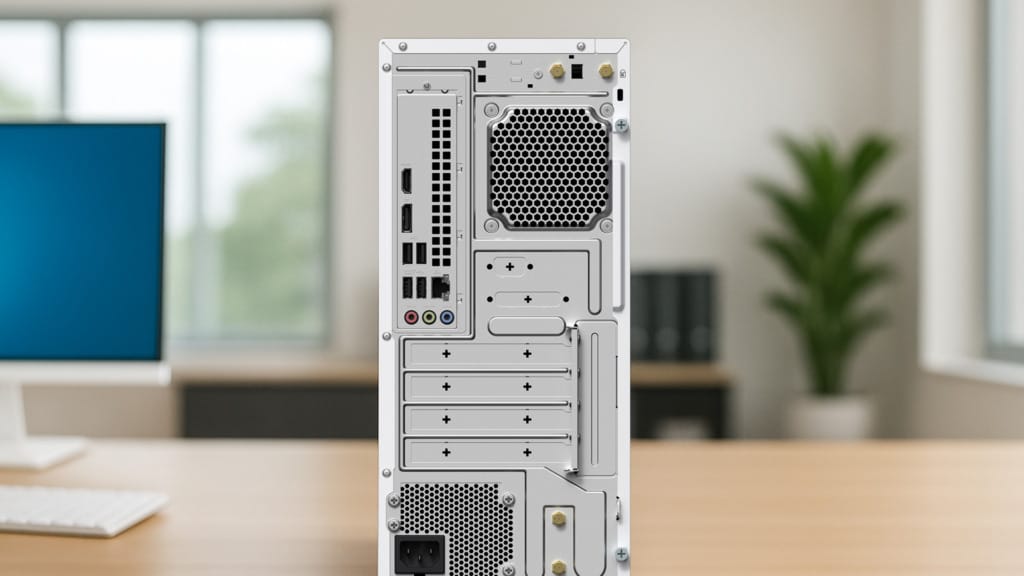
Around the back, users get the usual range of connectivity: four USB 2.0 ports, HDMI, DisplayPort, 7.1 channel audio and a Gigabit Ethernet port. The inclusion of both HDMI-out and DisplayPort gives users flexibility when connecting to modern displays. There’s also a Kensington lock slot for basic physical security.
Another highlight is the tool-free chassis. A single thumbscrew unlocks the side panel, making the internal layout neat and accessible. Adding RAM or swapping drives is straightforward, even for those unfamiliar with PC building. While not marketed as a DIY system, the V500’s internals are accessible enough to make upgrades manageable over time.
Strong performance with Intel Core mobile processors
ASUS offers two CPU options for the V500 Mini Tower: the Intel Core i5-13420H and the Intel Core i7-13620H. Both are mobile-class chips typically found in laptops, but their performance suits everyday desktop tasks. The i7 model offers 10 cores and 16 threads, while the i5 features 8 cores and 12 threads—more than enough for multitasking, browsing, spreadsheets, video calls and light editing work.
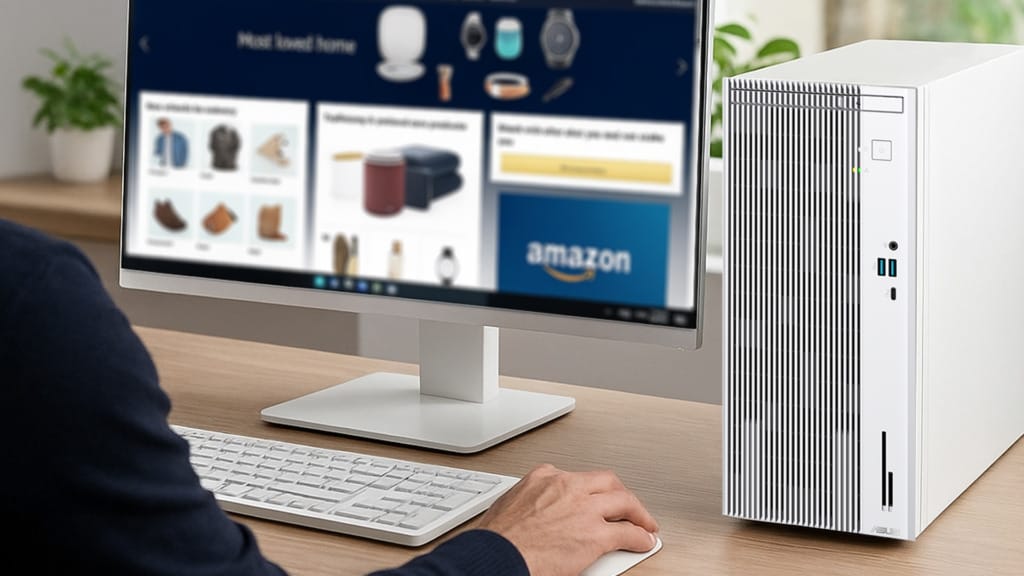
ASUS positions the V500 Mini Tower as a system built for smooth multitasking and everyday computing, from office applications and browser-based tools to media playback. The use of DDR5 memory also helps maintain responsiveness across multiple open tabs and background processes. Both configurations support up to 64 GB of RAM, adding future-proofing for users needing more power over time.
The system uses integrated Intel UHD graphics that are suitable for basic visual tasks, media consumption, and even some light creative work. But when it comes to the graphics department, the V500 is highly expandable and customisable, especially for GPU-heavy workflows like 3D rendering.
ASUS’ cooling design contributes to a quiet and efficient experience. The company claims noise levels stay below 38 dB at full load, which matches the sound of a quiet conversation. The chassis is also engineered for effective airflow, helping the system maintain stable performance and low noise even under sustained workloads. Combined with the use of mobile-class processors, the system also benefits from lower power consumption, making it a more energy-efficient choice for daily use.
A desktop made for modern needs
Connectivity is one of the V500’s strong suits. The front-facing USB ports are easily accessible and ideal for plugging in drives or charging devices. The inclusion of a full-sized SD card slot is helpful for photographers and content creators who regularly need to transfer media. Meanwhile, the rear ports ensure that peripherals like printers, speakers and monitors can stay connected without cluttering the front panel.
Wireless duties fall to an Intel Wi-Fi 6 module with Bluetooth 5.4, matching the latest mesh routers and game controllers. In practical terms, the desktop maintained steady Wi-Fi performance across rooms and handled Teams and Zoom calls without issue. The Gigabit Ethernet port provides a reliable backup for those using wired networks.
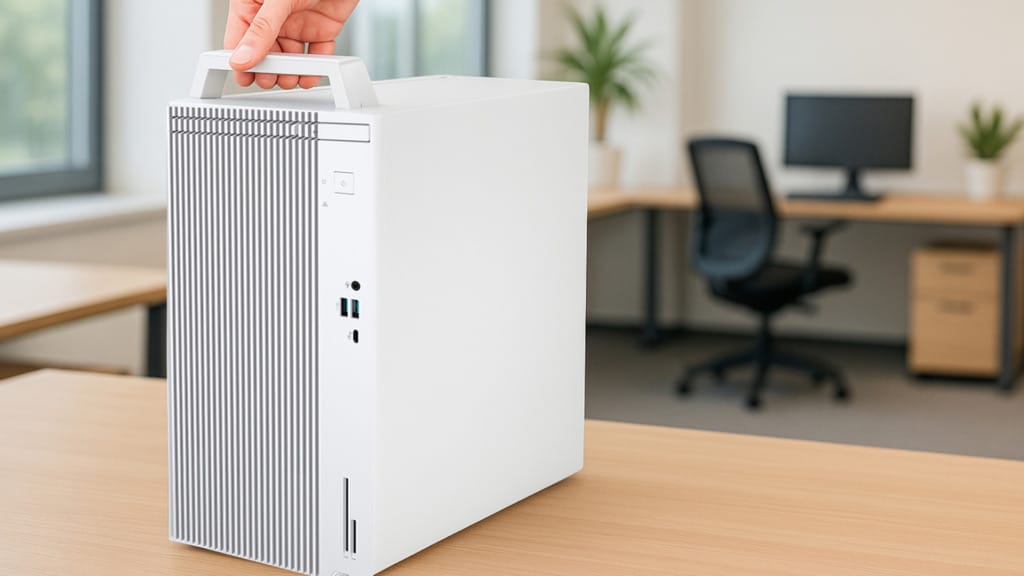
Storage flexibility is another key selling point. The system supports up to two PCIe 4.0 SSDs and a single 3.5-inch SATA drive, allowing users to balance fast boot and application storage with a larger capacity for backups or media files. RAID support is also available, providing extra reliability or performance depending on the configuration.
The verdict: ASUS V500 Mini Tower
The ASUS V500 Mini Tower is a well-built desktop that fits the needs of users looking for balanced performance, quiet operation and straightforward connectivity. It isn’t aimed at gamers or demanding creative professionals on the get-go but serves as a dependable workhorse for everyday use.
In terms of performance, Intel’s 13ᵗʰ-gen mobile processors and DDR5 memory offer plenty of headroom for multitasking, office productivity and light creative workloads. The lack of a discrete GPU limits its use for graphics-intensive tasks, but this trade-off allows for a cooler, quieter and more efficient design.
Its practical design stands out. The tool-free chassis, easy-to-access ports and durable build make it simple to set up, use and upgrade over time. ASUS’ attention to cooling and noise control also makes the system suitable for shared living spaces or smaller workstations where quiet operation matters.
With its modest footprint, quiet design and versatile performance features, the V500 Mini Tower is well suited for professionals, students and families who need a space-efficient desktop for daily tasks.
